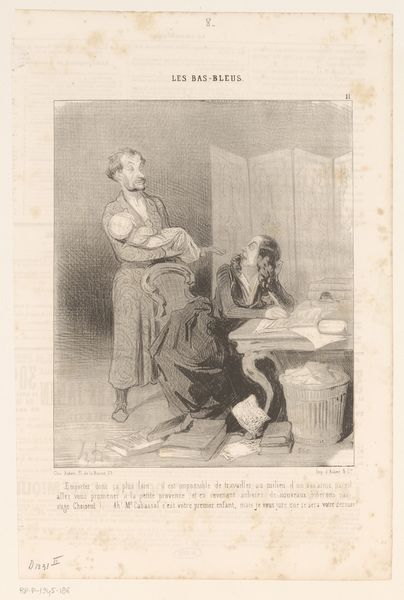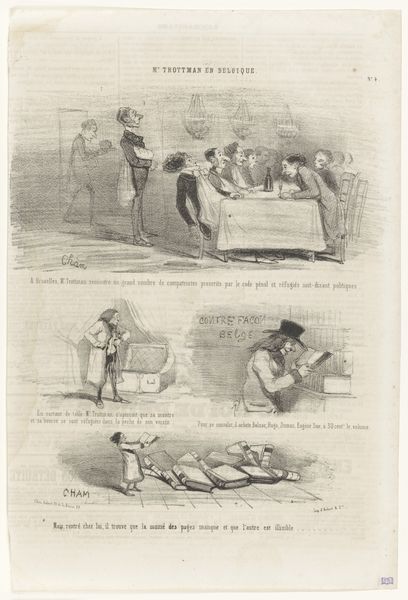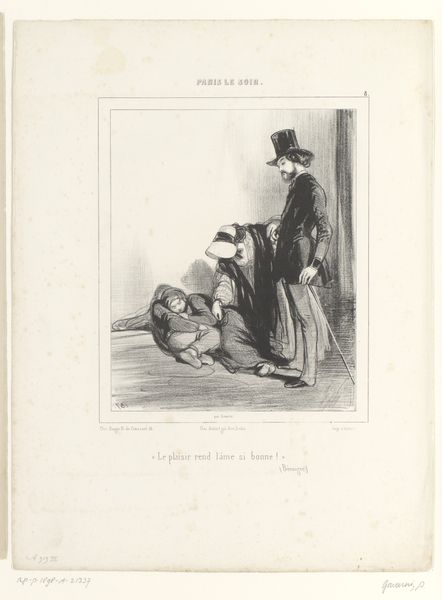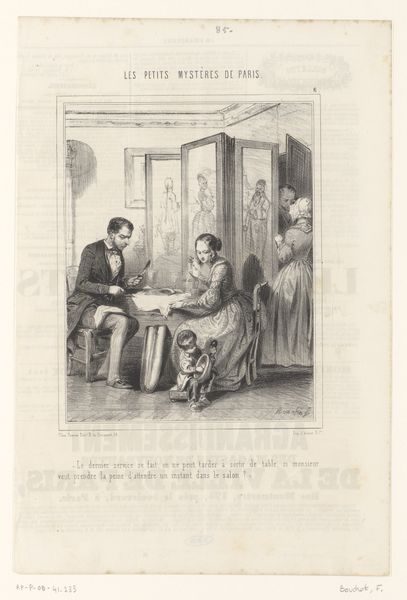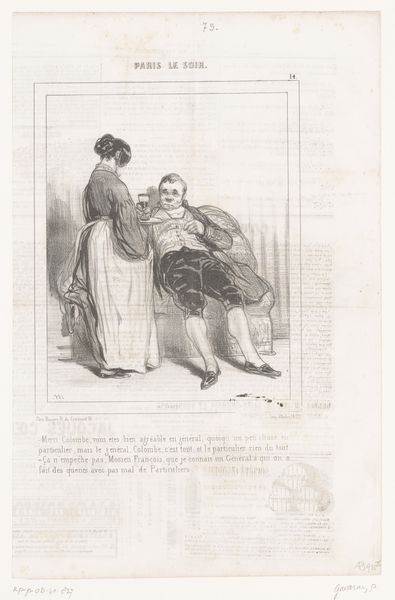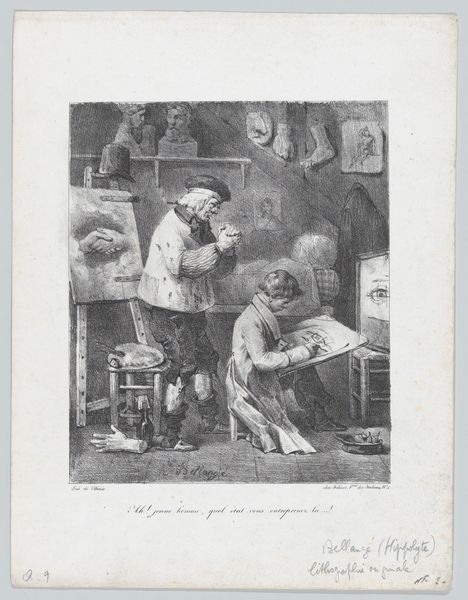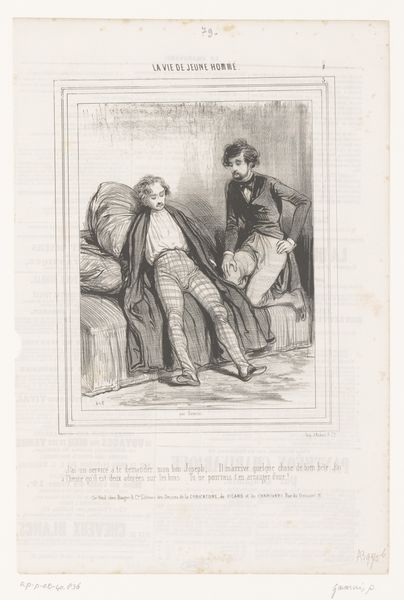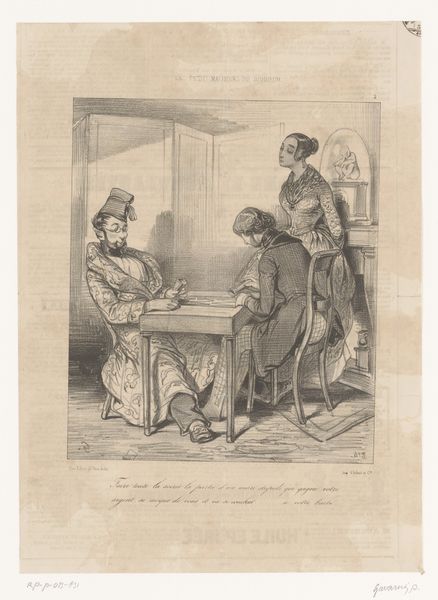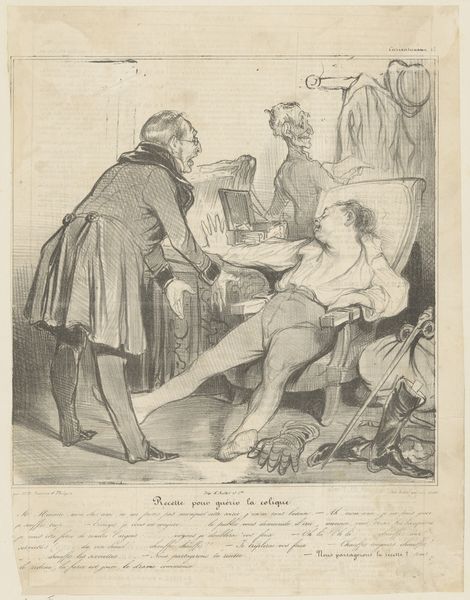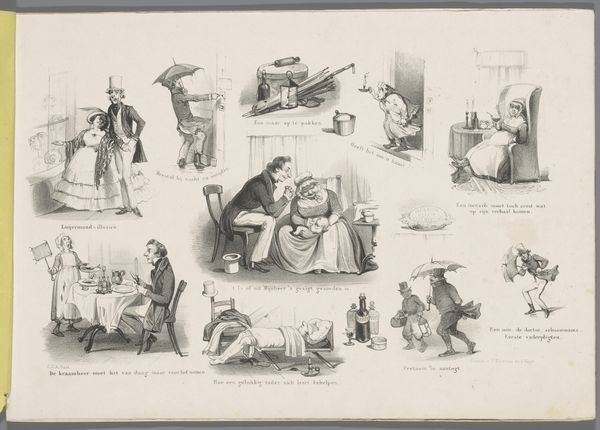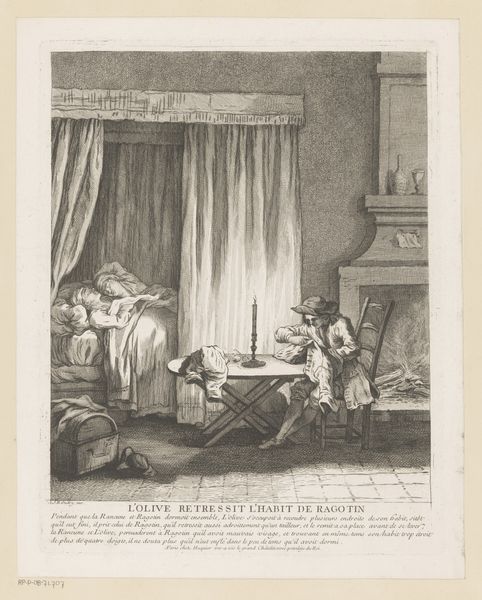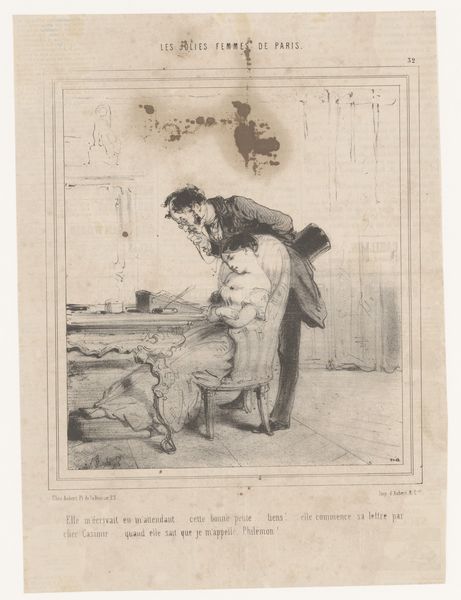
drawing, lithograph, print, pen
#
drawing
#
narrative-art
#
lithograph
# print
#
caricature
#
pencil sketch
#
romanticism
#
pen
#
genre-painting
Dimensions: height 365 mm, width 243 mm
Copyright: Rijks Museum: Open Domain
Curator: Right now, we're looking at "Bij de kapper en biddende man en vrouw", or "At the barber and praying man and woman", a lithograph drawing from possibly 1844 by Cham. Gosh, what a snapshot. My immediate feeling is a curious mix of humor and melancholy. Editor: It strikes me how Cham utilizes the imagery of contrasting realms—the mundane, the sacred—in this single frame. Notice the duality; grooming taking place, alongside implied religious observance just below. It speaks to the complexities within even seemingly simple societies, perhaps highlighting an evolving sense of identity amid cultural shifts. Curator: You know, I find Cham’s work so poignant, in the way it presents scenes of daily life. It is like peering through a slightly distorted lens. The exaggerated figures really convey a kind of underlying satire, though gentle. Even this barber giving a trim feels imbued with a silent story. Editor: Indeed. This drawing offers a critical social commentary using archetypes; The 'sophisticated' grooming juxtaposed with sincere prayer. Barbering might here symbolize status and westernization, while prayer connects with ancient ritual—a conflict of new and old values mirrored in Algerian society. Consider also, who prays and in what manner, next to such artifice? Curator: The characters certainly intrigue. Their faces, though caricatured, still reveal emotion. Take the man getting his hair styled; he has a patient expression as if he's thinking of a poem. Down below, the praying figure looks earnest, devoted. Each seems wrapped up in his world, maybe blind to the other. Editor: This deliberate juxtaposition isn’t random, especially in Cham’s hands. The lithograph format would allow the easy dispersal of these caricatures among an increasingly literate public. Perhaps to question norms, incite discussions on identity? Notice the family prostrate is cropped? And above a figure being primped and made upright. Curator: It is powerful how a simple drawing can unpack so much cultural weight. In today’s lens, how do we read the echoes of that colonial gaze from 1844 and its interplay of cultures clashing quietly next door to each other? I wonder… Editor: Perhaps it challenges us to question our present day perspectives, reflecting critically upon inherited symbolism and how evolving contexts redefine what imagery communicates over generations, even a sketch on a stone can endure.
Comments
No comments
Be the first to comment and join the conversation on the ultimate creative platform.

